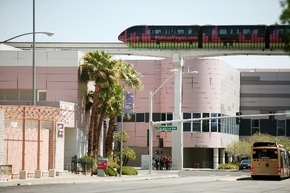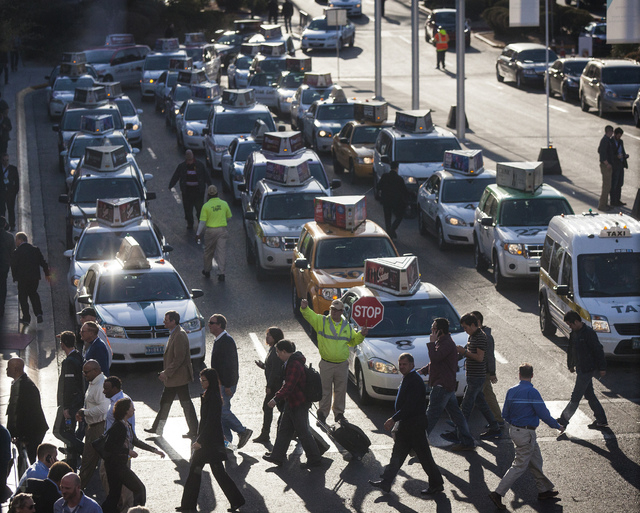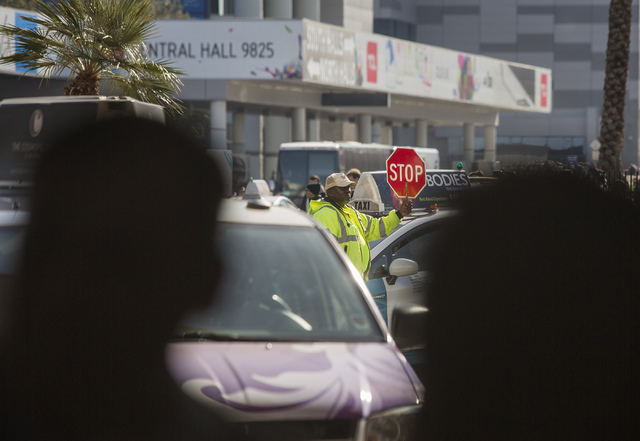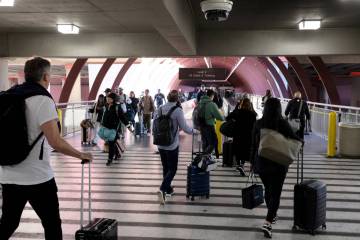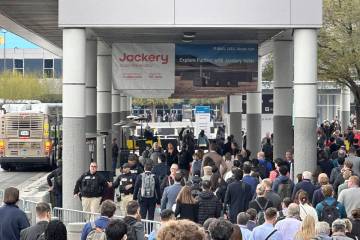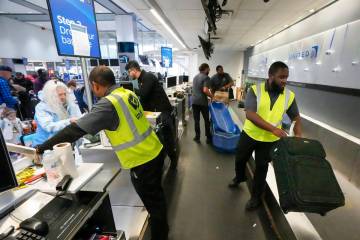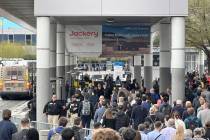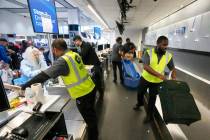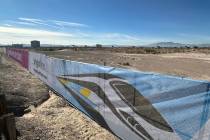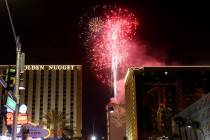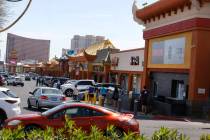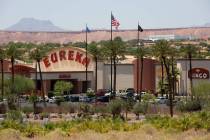Strip traffic consultant: ‘This is not a study … This is a business plan’
Don’t get the Regional Transportation Commission’s consultant on a resort corridor transportation plan worked up about writing a study about Strip traffic — even though that’s what it has been called.
“I hate that word ‘study,’” Michael Gallis, principal of Charlotte, N.C.-based Michael Gallis & Associates, said in response to a question at Wednesday’s Las Vegas Global Economic Alliance breakfast meeting.
“This is not a study. There are people who like to do studies, but I don’t like to do studies,” he said. “I don’t even like to do plans. I like to see things get built. This is a business plan, a business plan for Las Vegas, for infrastructure and the economy.”
Gallis issued a plea to business people to bring their ideas to a series of meetings to determine the best ways to ease congestion while building the economy of the area. He said the plan would “create the framework for the next phase in the evolution of Las Vegas.”
The Regional Transportation Commission originally labeled the project the Transportation Investment Strategy Study. It’s being rebranded as the Transportation Business Investment Plan, and Gallis has a contract not to exceed $2.7 million to complete it in the next 12 to 18 months.
A transportation plan has been a focal point of the proposed Las Vegas Global Business District, a $2.5 billion makeover for the Las Vegas Convention Center. Representatives of the Las Vegas Convention and Visitors Authority have been meeting with transportation leaders for several months in advance of Gallis’ work to set the stage for drafting the plan.
The group hopes to develop a multimodal transportation plan that could include a light-rail system, the monorail, dedicated lanes for taxis, buses and cars and pedestrian corridors.
Gallis is in Las Vegas this week for initial meetings with groups to explain his seven-step process of collecting the best ideas for improving the economy and crafting a transportation system around those goals.
“It involves looking at transportation infrastructure, but it’s not limited to transportation infrastructure,” he said. “It involves looking at the economy and the patterns of urban growth and asking ourselves what do we need to not only solve the problems of transportation, but to address economic needs and urban growth.”
Because of that high-altitude view, Gallis has no maps or renderings of what the resort corridor could look like in the future. Once he gathers information, analyzes it and builds consensus on the best course of action, the planners and engineers would take over.
Establishing economy-building goals is important because it would place a value on jobs, land values and urban growth that would require an investment of tax dollars.
Gallis said the information-gathering and analysis process would take four to five months.
Several transportation stakeholders already have begun the process, meeting as a committee with Rossi Ralenkotter, president and CEO of the Convention and Visitors Authority, and Tina Quigley, general manager of the Transportation Commission.
Representatives of the taxi industry, limousine, bus and shuttle companies, the Las Vegas Monorail, McCarran International Airport, the Las Vegas Metro Chamber of Commerce and the University of Nevada, Las Vegas, have seats at the table.
Gallis’ plea to the Global Economic Alliance, an organization that supports economic diversification and is composed of business owners, is for them to participate on committees for economics, urbanization and transportation.
Gallis said he is completing an inventory of destinations and bottlenecks — the airport, the Strip and the Convention Center. It’s an ever-changing landscape and when the Transportation Commission authorized Gallis’ contract, members reminded Quigley to be sure that any transportation analysis consider the potential of a new football stadium at UNLV.
Since the contract was approved, there have been other developments involving projects sure to generate traffic.
MGM Resorts International and AEG broke ground on a 20,000-seat arena near New York-New York and the Monte Carlo. MGM also has discussed plans for outdoor music festivals on vacant land it owns on the Strip.
In addition, the Genting Group took its first step toward the licensing of Resorts World Las Vegas, a $4 billion resort proposed on the north end of the Strip at the former location of the Stardust.
At this point, those plans are all part of the data inventory to be folded into the analysis of the plan Gallis is developing.
Contact reporter Richard N. Velotta at rvelotta@reviewjournal.com or 702-477-3893. Follow him on Twitter @RickVelotta.



